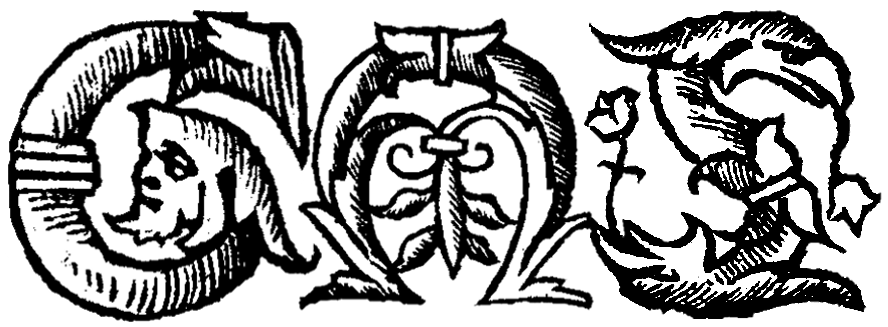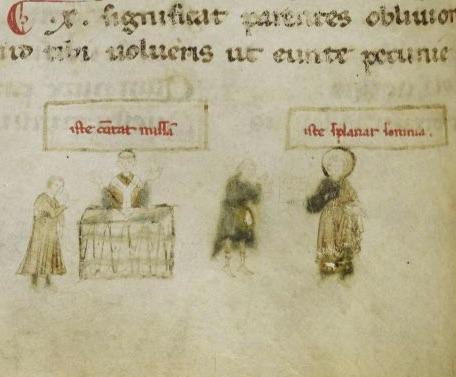An Explanation of Divination Through the Apostles | Sortes apostolite ad explanandum
Introduction to the Text
This brief and anonymous text, known as a “mantic alphabet”, was part of a popular divinatory tradition around the Mediterranean in the Middle Ages known as bibliomancy - telling a fortune from books. Mantic alphabets survive in Arabic, Greek and Latin. To use such a text, a reader opened a second book - in this case the introduction prescribes a Psalter be used - at random. The reader would ponder the first letter that they saw, which would then correspond to the future as described in the alphabet. For example, if the reader opened to Psalm 1, which begins “Beatus vir qui...” they would turn back to the dreambook’s entry for letter B and learn that B predicts that they will have “power over people.”
As a personal oracle that relies on an explicitly religious text as part of its divinatory process, mantic alphabets like this one combine two seemingly incongruous traditions. Priests, theologians and other religious figures often explicitly condemned soothsayers, oracles and fortune-tellers, but some nevertheless supported such practices including Gregory of Tours (d. 594), who described the practice of bibliomancy in particular. By insisting that divination occurred only after a prayer was said and only when a Psalter was used as the source of a random letter, this mantic alphabet attests to how popular practices of personal fortune-telling were able to carefully align themselves to fit within the bounds of religious doctrine. The practice of bibliomancy was particularly popular in the late Middle Ages and similar mantic alphabets exist drawing not only from Christian sources but similarly using Byzantine, Islamic and Jewish texts to tell a reader’s fortune.
Introduction to the Source
This is one of many mantic alphabets in Latin, French, English, German, and Welsh that are preserved in manuscripts across Western Europe. This Latin example was written in Northern Italy, likely Venice or the Veneto region, in the 13th century. It’s preserved in Berlin in Staatsbibliothek, Preußischer Kulturbesitz, MS Ham. 390 f.26v, a manuscript that combines several oracular and mantic texts - including a mantic dream alphabet also translated in the GMS.
This text is one of eighty-eight surviving bibliomantic alphabet texts in Western manuscripts, with some surviving from as early as the twelfth century but most surviving from the fifteenth. However, these texts were likely far more popular than the surviving manuscript record attests. Their brevity made them easily duplicatable and the close similarities between the kinds of fortunes predicted by the texts indicates that they were likely copied directly from each other.
Further Reading
Chardonnens, László Sándor. “Mantic Alphabets in Medieval Western Manuscripts and Early Printed Books,” Modern Philology, vol. 110, no. 3, 2013, pp. 340-366.
-
Chardonnens’s article includes the most up-to-date list of surviving manuscript and early printed book editions of mantic alphabets.
Elukin, Jonathan M. “The Ordeal of Scripture: Functionalism and the Sortes Biblicae in the Middle Ages,” Exemplaria, vol. 5, no. 1, 1993, pp. 135-160.
- On the relationship between mantic texts and the religious texts they often invoke.
Förster, Max. “Zwei kymrische Orakelalphabete,” Zeitschrift für celtische Philologie, vol 20, no. 1, 1936, pp. 228-243.
-
An important early study and survey of bibliomantic manuscripts that introduced examples (two in Welsh) outside of Latin and German.
Tobler, Adolf. Die altvenezianische Übersetzung der Sprüche des Dionysius Cato. Abhandlungen der königlichen Akademie der Wissenschaften zu Berlin aus dem Jahre 1883, philosophisch-historische Classe 1. Berlin, 1883, particularly p. 86.
-
Contains an edition of this manuscript.
Credits
Transcription by Danny SmithTranslation by Danny SmithEncoded in TEI P5 XML by Danny SmithSuggested citation: Anonymous. "An Explanation of Divination Through the Apostles." Trans. Danny Smith. Global Medieval Sourcebook. http://sourcebook.stanford.edu/text/explanation-divination-through-apostles. Retrieved on April 19, 2024.

